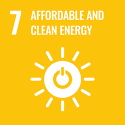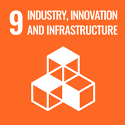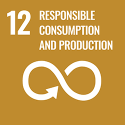By investing in our campus energy infrastructure and upgrading the energy efficiency of our buildings, we have been able to achieve a continuous reduction in carbon emissions since 2007/08 (i.e., the earliest year for which we have reliable and complete data). Figure 2 highlights the various sources of our emissions and the scale of change from 2007/08 to 2019/20. This covers both Scope 1 emissions (gas, oil, fleet transport fuel, biomass) and Scope 2 emissions (electricity grid). Scope 1 refers to those emissions we have direct responsibility for managing while Scope 2 refers to those emissions we can influence through our external partners that supply our energy and water (Scope 2).
Between 2013/14 and 2014/15 we achieved an 11% reduction in Scope 1 and 2 emissions due in part to commissioning a £2.7 million 1.6 MW combined heat and power (CHP) plant. This serves the campus with locally generated electricity and makes use of waste heat to provide space heating and hot water. Although this development has proved to be energy efficient, we are mindful that more sustainable and renewable energy sources (such as solar, wind, and geothermal) will be needed. The CHP plant is due for replacement by 2030 and we are currently evaluating greener options.
Between 2007/08 and 2019/20 we have reduced our water consumption by approximately 30%, but there have been years of higher consumption, peaking in 2013/14. Following a series of leak repairs and a major £1.4 million investment in the replacement of the campus water network in 2018, water consumption has reduced markedly from 2013/14 levels. Although water in Scotland is generally not in short supply, we recognise that energy is required to heat and treat the water as it flows through the water network. Thus, it is essential that we continue to monitor water consumption and make progress toward reducing consumption year on year.
Given that over 60% of our energy emissions are associated with the generation of space heating and hot water, a major programme is underway to improve the thermal performance of our buildings and our heat delivery networks. This will seek to reduce heat loss through improved insulation, cladding and glazing. This is essential work as there is little value in producing more sustainable forms of energy if that energy is subsequently lost through poorly insulated buildings.
As we consider our own campus emissions more broadly and expand our use of electric fleet vehicles, we are aware of recent Scottish Government guidance for public bodies to plan for net zero – including working to ensure that public buildings achieve zero direct (estate-related) emissions by 2038 and transitioning to zero emissions for all new fleet vehicles (see here).
We are also exploring options for more efficient and greener energy supplies, including the development of a Forth Valley Regional Energy Plan, cross-boundary energy options and more integrated heat and water networks. We also intend to add to our existing air and soil heat pumps and biomass systems to further reduce our carbon footprint.
Our progress on energy and water consumption is already publicly available and is reported on an annual basis through the Scottish Government’s Public Bodies Climate Change Duty Reporting and via returns provided to the Higher Education Statistics Agency. Progress is also monitored annually via the University’s Corporate Sustainability Steering Group and University Court.




